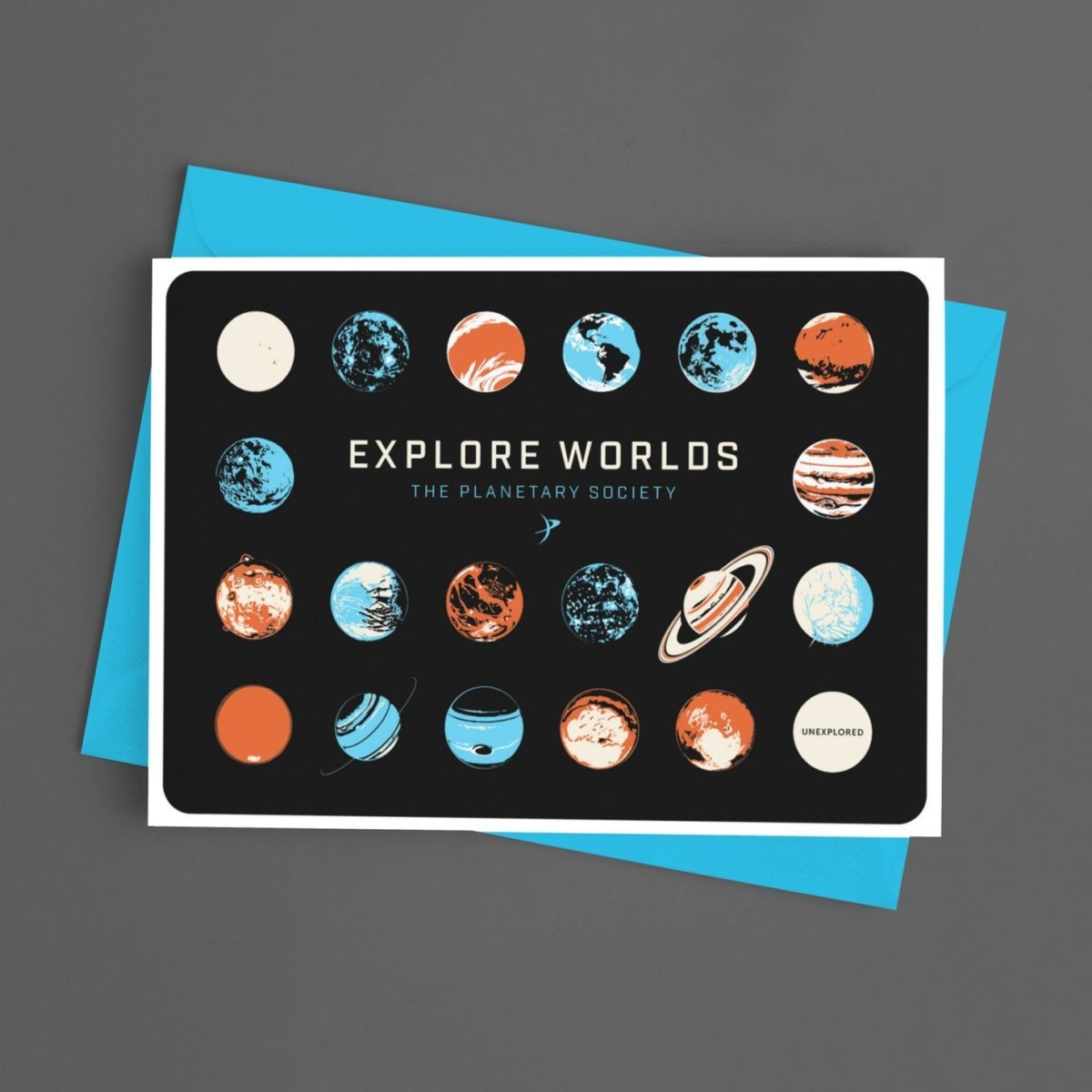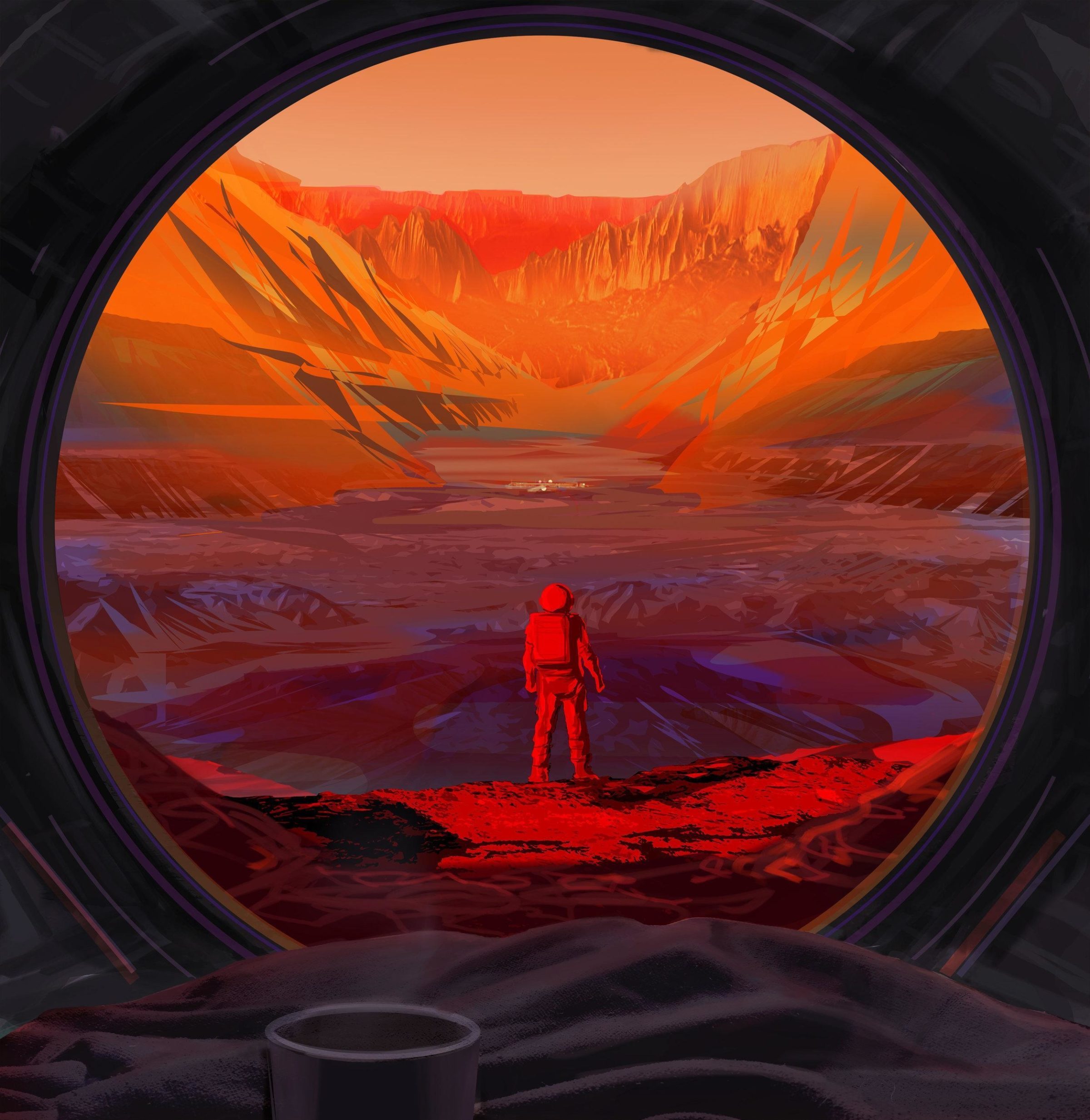The Downlink • Aug 14, 2020
The view from a rover’s eyes, and tips for viewing the night sky
Space Snapshot

NASA’s Mars Odyssey orbiter recently snapped this image of beautiful textures in the ice of Mars’ south pole. Stretching horizontally across the bottom of the image is a giant trough where deeper layers of ice can be seen. Image credit: NASA/JPL-Caltech/ASU.
You love space, now take action
This weekly newsletter is your toolkit to learn more about space, share information with your friends and family, and take direct action to support exploration. Anyone can subscribe at planetary.org/connect to receive it as a weekly email.
Mission Briefings


A cable above the Arecibo Observatory radio telescope in Puerto Rico snapped on Monday, ripping a 30-meter gash in the dish (pictured). The observatory is an important tool for tracking and characterizing potentially hazardous asteroids; two weeks ago it ruled out that a half-kilometer-wide asteroid called 2020 NK1 would safely miss the Earth in 2043. Image credit: University of Central Florida.

NASA’s InSight spacecraft has finished using its robotic arm to scoop Martian soil into a hole around its heat-flow probe, which has been trying to bury itself beneath the surface since March 2019. Next, mission controllers will have the mole self-hammer while pressing down on the filled-in hole with the robotic arm.

The Butterfly Nebula. The Whirlpool Galaxy. Many deep-space objects have poetic unofficial names that make them easier to identify. However, some of those names are insensitive or harmful, and in those cases NASA says it will only use the official International Astronomical Union designations. The agency is reevaluating the names as part of a broader diversity, inclusion, and equality effort.

When NASA’s Dawn spacecraft arrived at the dwarf planet Ceres in 2015, it discovered bright spots formed by briny water bubbling from beneath the surface. Scientists now say the water comes from a reservoir 40 kilometers deep and hundreds of kilometers wide. The implications for small worlds are vast: we knew icy moons like Europa could have subsurface water, warmed by the pull of a nearby giant planet’s gravity. Yet Ceres, all alone in the chilly asteroid belt, seems to have found a workaround.

NASA’s OSIRIS-REx spacecraft completed its final dress rehearsal before it collects a sample from asteroid Bennu in late October. The samples, which will return to Earth in 2023, may tell us more about the origin of the planets and life on Earth. What’s the benefit of sample return?
From The Planetary Society


If you’ve been waiting for the right time to get into astronomy, this is it. This season’s night skies have given us plenty of wonders to behold, from comet NEOWISE to stunning Jupiter and Saturn, and there’s lots more to come as Mars gets closer to Earth. You can find everything you need to start looking up on our new Night Sky page, including handy new guides to beginner’s astronomy and picking your first telescope. Spoiler alert: it’s all a lot easier than you might think. Image credit: Niklas Arndt.

Do you have questions about Perseverance and its fellow robotic Mars explorers? Our solar system specialist Emily Lakdawalla has answers in her recent AMA (Ask Me Anything) on Reddit. Check out the Space subreddit and look for Emily’s AMA to learn more about making Mars science discoveries with rovers and orbiters.

What the heck is a Magnificent Amazing Stupendous Tenacious Captivating Audacious Mars Zoomer? Find out on this week’s Planetary Radio, plus learn all about the laser-firing instrument aboard NASA’s Perseverance rover that measures rock spectra from a distance.
What's Up

This week Jupiter shines very brightly in the southeastern sky after dusk, with yellowish Saturn to its lower left. 1-2 hours later Mars rises in the eastern sky, almost as bright as the brightest star in the sky and getting brighter every night. In the pre-dawn eastern sky, you can find Venus shining brightly.
Planets by Post

Sending an interplanetary message has never been so easy. These new greeting cards depict real planets and moons in our solar system, each as stunning as it is intriguing. These are among the worlds that The Planetary Society seeks to explore and understand. When you buy a card to send to a friend, you’re helping advance that mission. Check out what else we’ve got in store for you and the space fans in your life.
Wow of the Week

Although this week’s newsletter opened with Mars in shades of grey, we prefer to imagine it in its full red glory. This illustration shows an astronaut looking out upon the Red Planet, a possibility that humankind is striving to make a reality. Image credit: NASA/JPL-Caltech.
Do you have a suggestion for the Wow of the Week? We’re looking for space-related art, music, gadgets, quotes, fashion, burning questions, brief sci-fi passages, or anything else that will make our readers go “Wow!” Send us your idea by replying to any Downlink email or writing to [email protected], and please let us know if you’re a Planetary Society member.


 Explore Worlds
Explore Worlds Find Life
Find Life Defend Earth
Defend Earth


